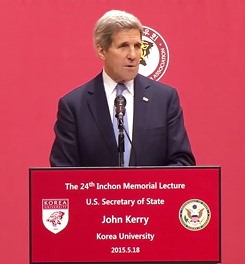A survey of recent cyber news . . .
***
Amber Corrin writes for FCW that the 2013 National Defense Authorization Act (NDAA) “require[s] DOD officials to report on cyber operations to Congress on a quarterly basis,” including briefings on “all offensive and significant defensive military operations in cyberspace” and interagency processes “for coordinating and de-conflicting full-spectrum military cyber operations. . . .” Corrin explains that the language opens the door for CyberComm moving to MAJCOM status. President Obama has signed this NDAA into law. This is a significant development, so if you haven’t alreay, check out this article for FCW.
J. Nicholas Hoover, for InformationWeekGovernment, also on the cyber elements of the 2013 NDAA. Hoover writes that the NDAA instructs DOD to “‘develop a strategy to acquire next-generation host-based cyber-security tools and capabilities'” that are “installed in an open architecture that allows for multiple cybersecurity tools. . . .”
***
Emily Badger blogged for Co.EXIST about CyberCity, a model which allows US military hackers to practice taking down interconnected networks. We’ve blogged about CyberCity before, but Badger put up some pictures of the model, worth a look.
***
J. Nicholas Hoover reports for InformationWeekGovernment on how the U.S. Postal Service will become a part of the NSTIC pilot. Not many details beyond that, but the article discusses the NSTIC concept.
***
NetworkWorld’s Taylor Amerding, leapfrogging off Ellen Nakashima’s article on the same topic, discusses the concept of honeypots and private sector active defense.
***
John Reed writes for Foreign PolicyFollow on from our Year in Review thread, on five things we have learned about cyber in 2012:
- Destructive cyber attacks are here to stay.
- The U.S. was behind Stuxnet (allegedly)
- The U.S. reveals that it’s working on a doctrine of cyber deterrence
- The Pentagon is developing cyber fire support on demand
- NSA’s mobile devices.
***
Mark Clayton, for the Christian Science Monitor, on how the NSA’s Perfect Citizen program–an effort to protect the US electric grid–has been confirmed. Clayton notes that privacy rights groups are worried about the program.
***
UPI.com reports that Israel has “started a program to teach teenagers to be ‘interceptors’ of cyberattacks by teaching them cyberwarfare techniques.” This is a 3 year program for students aged 16-18.
***
Thomas O’Toole had a series of prediction articles for Bloomberg:
Cyberlaw Predictions: Aftermath of SOPA/PIPA
Cyberlaw Predictions: The Software Patent Scene
Cyberlaw Predictions: Protecting Trademark Interests in the New Domains
***
I haven’t had the opportunity to read it, but this looks to be a fascinating article from Patrick Lin for The Atlantic. The title is Could Human Enhancement Turn Soldiers Into Weapons That Violate International Law? Yes. Slightly outside our cyber topic matter, but relevant re neurosecurity and the possibility of integrating computers into the human body. I hope to write more on this article soon.


Leave a Reply